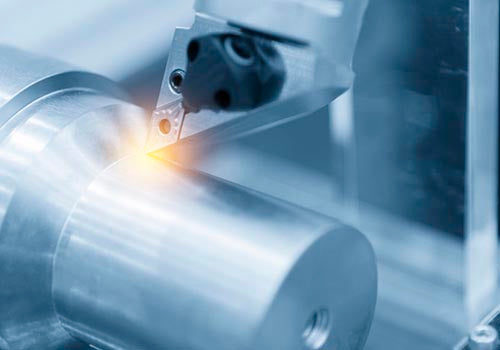
Maximizing Efficiency: Best Practices for Optimizing CNC ID & OD Turning Toolholders
Share
CNC turning is a complex process that requires precision and accuracy. As such, optimizing your toolholders is an important step in maximizing efficiency in your CNC turning operations. Choosing the right toolholder can help you achieve higher precision, better surface finishes, and longer tool life.
Here are some best practices for optimizing CNC ID & OD turning toolholders:
Choose the Right Toolholder
Choosing the right toolholder is critical to achieving optimal performance. Your choice will depend on a number of factors, including the type of material you are machining, the size and shape of the part, and the cutting forces involved. Some common types of toolholders include collet chucks, hydraulic chucks, and shrink-fit holders.
Collet chucks are ideal for high-speed machining and can hold a wide range of tools. Hydraulic chucks, on the other hand, are ideal for heavy-duty cutting and provide excellent clamping force. Shrink-fit holders are best for high-precision machining and provide a secure grip on the tool.
Ensure Proper Fit
Once you have chosen the right toolholder, it is important to ensure that it fits properly. A poorly fitting toolholder can cause vibration, chatter, and poor surface finishes. Make sure that the toolholder is seated properly in the spindle, and that the shank of the tool is clean and free from any debris.
In addition, make sure that the toolholder is tightened properly. Over-tightening can cause the toolholder to deform, while under-tightening can cause the tool to slip out of the holder.
Use the Right Inserts
Choosing the right inserts is just as important as choosing the right toolholder. The insert material, geometry, coatings, and edge preparation can all affect the performance of the tool. Make sure that you are using the right inserts for the job, and that they are properly installed in the toolholder.
For example, carbide inserts are ideal for high-speed machining and are resistant to wear and tear. Ceramic inserts, on the other hand, are ideal for high-temperature applications and provide excellent thermal stability. Diamond inserts are best for high-precision machining and can provide excellent surface finishes.
Check Runout
Runout is the amount of deviation from true rotation of a tool or workpiece. Excessive runout can cause poor surface finishes, reduced tool life, and increased vibration. Make sure that you check the runout of your toolholder regularly, and replace it if necessary.
To check runout, use a dial indicator to measure the deviation from true rotation. If the runout is excessive, try adjusting the toolholder or replacing it altogether.
Maintain Proper Cutting Conditions
Finally, it is important to maintain proper cutting conditions to ensure optimal performance. This includes maintaining the appropriate cutting speed, feed rate, and depth of cut. Make sure that you are using the right coolant or lubricant, and that it is properly applied to the cutting zone.
In addition, make sure that the toolholder and inserts are properly maintained. Clean them regularly and inspect them for signs of wear and tear. Replace them if necessary to ensure that they are in optimal condition.
By following these best practices, you can maximize the efficiency of your CNC ID & OD turning toolholders, and achieve optimal performance in your turning operations. Remember to always choose the right toolholder and inserts, ensure proper fit and runout, and maintain proper cutting conditions to achieve the best results.




